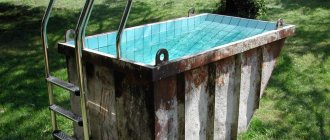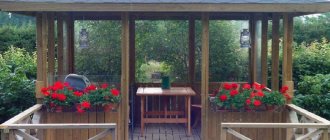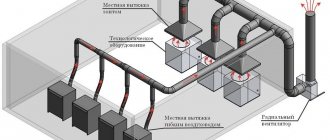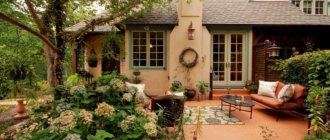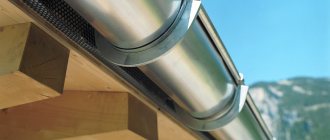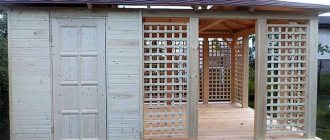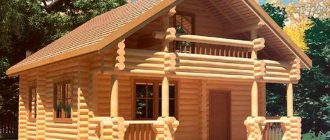Set of socks, Omsa socks
349 ₽ More details
Set of socks, Omsa socks
349 ₽ More details
Heating mats Teplolux
If for some reason it is not possible or you do not want to use ordinary silicate glass for glazing, you can make polycarbonate windows for the veranda instead. Moreover, depending on your preferences, you can use both cellular and monolithic varieties of this polymer.
What is the meaning of frameless glazing?
Any frames make the interior heavier, if not to say that they greatly spoil the appearance of the balcony from the street.
Frameless glazing technology was invented in Finland, where winters are also quite harsh. They do not aim to insulate the balcony, but only try to protect it from the effects of wind and precipitation. At the same time, such rooms are filled with daylight as much as possible. Even such glazing can create a vestibule between the apartment and the street, which significantly retains home heat. In our country, the main purpose of glazing a balcony is to increase the heated area of small apartments, which undoubtedly is some kind of distortion in consciousness. For the sake of increasing living space, we sacrifice the opportunity to relax in the fresh air. If you use frameless glazing, you can easily turn a balcony or loggia into an excellent recreational area next to your apartment. In addition, if the windows are open, the sashes will not be visible; in such structures they are usually sliding or folded into an accordion.
Frameless glazing technologies are often used in the construction of verandas and terraces
Frameless glazing looks great on any balcony and loggia, be it old or new, elegant or bulky. This cannot be said about the traditional type of windows with frames. When using them, you have to edit the design project very carefully to maintain its attractiveness. Among other things, frameless glazing has found its application in the construction of terraces, verandas, gazebos and other similar objects.
The lack of frames forced engineers to rack their brains over how to fix glass in the openings so that they would stay there no worse than with them. As a result, the following constructive solution was invented:
A special aluminum working profile is attached to the top slab of the balcony with anchor bolts. This is done with an accuracy of 2 mm along the outer border of the balcony. A guide profile is attached to the railing, which does not carry a load. For frameless glazing purposes, only tempered glass is used. All fittings are glued to it before being installed in place. There are other requirements for glass: if the sheet height is less than 2 m, you can use 6 mm glass; if it is taller, you will need 8 mm glass. The width of the doors varies from 60 to 80 cm. Tempering the glass prevents it from breaking from an accidental blow or gust of wind. The glass is moved along the profile using special racks with plastic wheels. To avoid rattling and jumping off, all structural parts are glued with polyurethane glue. To protect against precipitation, an inter-glass acrylic seal is always installed between the glasses.
The profile and the doors are also not in direct contact, since there is a rubber gasket between them. To have an idea of frameless window construction, you can pay attention to how the door mechanism in sliding wardrobes works.
The design of sliding glass, as in sliding wardrobes
- When creating the structure, only durable, reliable materials are used that are not afraid of corrosion, as well as polyurethane sealants, which are not susceptible to light.
- Polyester or plastisol ebbs are installed on the outside.
There is another way to open the doors - the “book” method. In this case, all the doors not only move along the guides, but also swing open. This design resembles an accordion.
Glazing with sashes that fold out and slide like an accordion
Converting a summer terrace into a dining terrace with transparent walls. Third stage of evolution
Our forum member with the nickname crystalik has a 6x6 meter bath house at his dacha near Novosibirsk, but the third part of this room is an open terrace.
This distribution of space seemed non-functional to him, and he decided to expand it into a larger space, which would include a kitchen, a dining room and a solid fuel boiler. The following project was born:
The terrace stands on 5 thick-walled stilts. The frame from the side of the house was attached to the protruding heads of the piles on which it stands. From the side of the house, the frame was placed on the heads of the piles on which the house stands, and in two places I additionally screwed in the beam fasteners.
The craftsman covered the closed part of the terrace (where the boiler is planned) with OSB sheets. I installed large windows “warm, not country.”
To avoid condensation on the windows with such a glazing area, low radiators are planned along the perimeter.
To avoid large heat losses, the owner of the house insulated the ceiling well.
We arrived at two o'clock in the afternoon. It was -24 on the veranda after a cold night. They turned on a two-kilowatt convector. The next morning at 11 o’clock it was +12 there, and -10 outside. We warmed up to +22 with a fan heater in an hour, drank tea and relaxed in the warmth.
Frameless glazing of balconies and loggias
Rice. 2. Frameless glazing of balconies.
Frameless panoramic glazing finds worthy application in the interior of balconies and loggias. As mentioned earlier, due to the absence of frames, the illusion of the integrity of a single large glass is created. This design feature makes it possible to get an almost unique view of the surrounding city, without limiting the view with frames.
Before you start glazing, you should dismantle the old windows, while observing safety precautions. Then it is necessary to carry out the required processing of the walls (leveling the surface, with a preliminary check using a building level, etc.). Afterwards the profiles are installed. Next, you should treat the gaps remaining between the profile and the wall using special solutions. At the last stage, the installation of window sashes, turning mechanisms and locks takes place. It should be noted that the use of frameless glazing of balconies and loggias is more appropriate on the upper floors of high-rise buildings. Owners of private houses can use this technology at will. But at the same time, it is necessary to be aware of all the disadvantages and limitations of frameless panoramic glazing.
We arrange the interior
When the installation is completed, you can safely move on to organizing the interior space of the gazebo or veranda. Install cozy sofas and armchairs, buy soft pillows and a bright blanket - then this place on the site will become your favorite. An example of a cozy veranda interior is shown in the photo below. Notice how harmoniously the interior furnishings combine with the panoramic view.
Photo: from the veranda there is a beautiful view of the site
Thus, if you have always dreamed of a stylish and modern gazebo or veranda, frameless glazing is what you need. We hope that the photos and videos presented in our material helped you decide whether you can do this type of glazing yourself or whether you will have to turn to professionals for help.
Aluminum glazing
Aluminum glazing appeared relatively recently. Just ten years ago, aluminum was not used at all in the construction of residential buildings.
Now this method is becoming more and more popular. This is primarily due to the fact that only recently we have received an aluminum alloy that meets the requirements for thermal insulation. This was the main problem with aluminum and the main reason why it was rarely used.
Also, the advantages of aluminum include environmental friendliness and fire safety, so we can say with confidence that this method will only become more popular.
Balcony Glazing Guide
Do-it-yourself: balcony glazing
Balcony glazing work is carried out in several simple stages.
Recommendations for taking measurements
Scheme for taking measurements for balcony glazing
Measure the front and side balcony handrails. You must make sure that the roof of the balcony overhangs its railings. To do this, use a plumb line. Also make sure that the upper perimeter of the balcony room coincides with the lower one.
If deviations are detected, be sure to take these points into account when manufacturing (ordering) double-glazed windows. Draw up a sketch of the glazed balcony indicating the measurements obtained.
be59038af8e275601e5179936236d58b.jpg:large 1a06f1e8bdd700af21a6996a297a9d89.jpe
1e8a5ea9e471c5aa9e87e47b239792e5.jpe
Installation of wooden frames
Preparing for glazing a balcony Strengthening the base for glazing Support structure
First step
Install a box made of wooden beams. The lower beam must be fixed at the level of the railing. Attach the top one to the ceiling using brackets. The side elements are fixed with brackets to the walls.
To further increase the structural strength, install a third horizontal beam.
Scheme of rigid fastening of a wooden frame
Second step
Install sheathing to install decorative trim.
Third step
Install glazed wooden frames. Treat the wooden elements with an antiseptic and paint if necessary.
Aligning the frame in the opening
Fourth step
Install galvanized canopies outside to protect the wooden structure from atmospheric moisture and improve the appearance of the balcony.
Installation of metal-plastic systems
Balcony glazingAdditional sealing of factory unitsAdditional sealing of factory units
Metal-plastic systems are installed on the parapet before installing the window sill.
First step
Install corner, end and intermediate support posts. It is very convenient to use a wooden beam for this.
Second step
Attach the support posts to the overhead slab and parapet. For fixation, use corners and screws. If desired, you can sew up the structure with a PVC strip.
Third step
Remove the glass units from the frames to avoid damaging them during installation.
This is extremely simple to do: pry up the glazing beads with a narrow screwdriver, pull them out and remove the double-glazed windows.
Fourth step
Remove the doors. To do this, press out the top window hinge pin and pull it out using pliers, then lift the window sash and remove it from the hinge.
Fix the support profile at the bottom of the window frame.
Frame installation Fasteners
Seventh step
Insert the frames into the prepared openings, making sure there are no distortions or other defects. If distortions are detected, level them using wedges.
Foam seams around the perimeter of the glazing
Eighth step
Secure the frames by screwing self-tapping screws into the anchor holes provided for this purpose.
Combined glazing fastening
Ninth step
Return the sashes and double-glazed windows to their places.
Make sure the system is working properly. At the end, all you have to do is foam the grooves, mount the window sill and complete the final decorative finishing.
Protection of the upper part of the glazing
Installation process
The frame or frames for the windows are ready. You can start installation:
- Hinged windows. We insert a sheet of material onto the sealant into the finished frame, not forgetting to observe the thermal expansion gaps. We fix it with glazing beads, just like regular glass.
- Sliding. The top guides are installed first. Then the lower runners are marked and installed along a plumb line. Then we insert the panels and attach the necessary fittings to the material itself.
- Removable. Fittings are screwed around the opening to hold the removable window. The structure is screwed on from the inside with convenient handles for quick dismantling.
It is quite easy to glaze a veranda with polycarbonate at home, regardless of whether it is monolithic or cellular. You just have to follow the general building codes and rules when constructing a frame or frame, and also follow the instructions of the polycarbonate manufacturer.
DIY frameless glazing of verandas and terraces: step-by-step development
Developing the installation of a frameless glazing system is quite simple. If you follow the installation procedure and assembly instructions, you will be able to complete the work without hiring professionals.
b65d332805adfcf9bdc0c1418488a99e.jpe
Non-specialized work procedure:
The preparation of the opening depends on the stage of construction at which the glazing is performed. If you have an old window unit, you need to dismantle it. The following steps: remove the sashes, ebb, window sill and internal strips;
Using a hacksaw or jigsaw, cut through the bottom of the box, dismantle the sides, top and bottom sides;
Remove debris and clear the gap. Processing quarters: use a hammer and an ax to remove sagging old mortar and protruding stones;
Treat chips and potholes with a quick-hardening construction mixture for facade work;
Level part of the opening on the inside of the room with plaster. At the upper end of the opening, mark the place where the profile is secured. Attach the bar and tighten the fastening anchors. Adjust the horizontal placement of the profile with adjusting plates 0.5-4 mm thick - the size depends on the differences. Join the corner top profiles using corners and check the horizontality of the surface. Measure the height of the glass sheet from the top and apply the appropriate mark at the base of the opening. Make a hole, install a securing anchor and a corner metal plate. Attach and secure the lower profile with bolts. Upon completion of installation of all profiles, check and align their horizontal placement. Following the instructions, hang the glass alternately. Almost always, the upper guide is wound on first, and then the lower one is positioned. Check the tightness of the joints of the window sashes.
Important! When doing frameless glazing of a gazebo yourself, you may not be able to save much. But many manufacturers provide a warranty on the product only subject to experienced installation.
DIY frameless glazing of the veranda: video
Tips for the care and maintenance of frameless glazing systems
To extend the life of glass structures and maintain the initial gloss, you need to follow simple rules:
All cleaning products for glass and mirror surfaces are suitable for cleaning glass. The inside can be easily cleaned while the doors are closed. The rollers must be lubricated every year with a Teflon spray. The inner surface of the lower and upper profile should be cleaned once a year. To remove accumulated dust and dirt, simply wipe the slats with a damp cloth. For cleaning, do not use products with abrasive particles or based on solvents or acids. Scope of implementation of sliding frameless glazing
An elegant and modern glazing system is used in the arrangement of:
Gazebos and terraces. Transparent structures offer beautiful views of the surrounding nature. Such glazing allows you to enjoy the garden and landscape composition even in bad weather. A feeling of unity with nature is created.
Winter Garden. To place flowers, “insulated sliding systems” with duralumin fastenings are almost always used. This structure provides for the possibility of ventilation and heating in winter. Loggias and balconies. There is no desire to hide the beautiful view on the other side of the window behind bulky window blocks. A good solution to the problem is to install frameless glazing yourself or with the help of professionals. Uncluttered large windows will visually expand the space and emphasize the dignity of the home. Summer areas of restaurants and cafes. Frameless structures allow the use of an additional summer area before the onset of frost. If the structure is insulated, the veranda can be used all year round.
Showcase. Glazing display windows with frameless systems increases the range of visibility of the products on display. Facades. The method of warm glazing without frames is used to equip many facades of new buildings for offices and shops, working in tandem with insulated double-glazed windows. Sliding glazing is often combined with fixed sashes to increase the thermal capacity of the building and obtain a truly panoramic view.
Photos of examples of glazing of balconies and loggias
Panoramic windows on loggias appeared relatively recently. Glass is made:
- transparent;
- matte;
- pasted over with reflective film if the walls are facing south.
Stained glass glazing of a large loggia will look very “expensive” and attractive.
On the north side, floor-to-ceiling glass solves the problem of low light.
By glazing the loggia using the frameless method, you can complement the parapet with a forged side. It can be light and contrasting depending on the finish. A good option is plastic lining. Budget-friendly and aesthetically pleasing, large selection of colors.
6fbc3490847a6440cb54a4d8afe8ec87.jpe
3ceb52c2b9048b4c032dc71d50ce48ea.jpg:large
Owners of apartments on high floors of new buildings should pay attention to such details.
Stained glass with white frames looks elegant. If the windows face the street, the standard white finish is preferable. Lightweight PVC panels do not turn yellow from ultraviolet radiation and are easy to clean.
Difficulties arise with the glazing of balconies on the top floors. We have to make an additional roof. In recent years, transparent sloping roofs similar to dormer windows have become popular.
Panoramic glazing looks great on large and medium-sized balconies.
In temperate climates, balconies are often used to store unnecessary items. Glazing radically changes the situation; the useless area of the apartment can be turned into a comfortable place to relax. A warm option is an opportunity to enlarge the room. Glazing, even in its simplest form, protects from street noise and dust. Becomes an additional barrier for attackers.
In such a room you can relax and unwind a little, especially if there is a picturesque picture outside the window.
Open-closed terrace. First stage of evolution
It happens that family members cannot agree on one decision, and then a compromise has to be sought. A member of our portal with the nickname Pavel Again lived in an old house with an old veranda, the lower part of which was covered with boards, and the upper part consisted of frames with many pieces of glass of different shapes.
When they started modernizing the terrace, some family members insisted on an open version, while others dreamed of a closed one. We agreed on removable windows. Here is the technology used:
We screw threaded rods into the wall and hang sheets of transparent plexiglass on them from the floor to the roof (this is about 2.5 meters).
This is how this terrace lives: in autumn and winter it is closed.
And in the summer it is open.
Main types and types of glazing
There are 3 options for installing glass blocks:
- Cold (1 frame). It requires laying powerful insulation between the windows so that the balcony can be used as a refrigerator in winter.
- Warm with insulation of the loggia inside and outside. The frames are equipped with thermal inserts. Although the option of preserving and retaining heat in the room may result in the appearance of mold and condensation on the glass. It is impossible to do without arranging natural ventilation.
- Sliding. Suitable for small loggias, saving space and protecting from dirt and precipitation. The mechanism of action is to slide one flap behind another. Although the option is not suitable for the harsh conditions of the Russian climate. In winter, the roller mechanisms may fail and freeze. Another disadvantage of the design is single glass. It will be cold on the balcony in winter.
- Panoramic - a type in which there are no frames. Guides with grooves are installed along the bottom and top of the balcony. Durable, thick glass with maximum insulation is inserted, from floor to ceiling in a hinged, sliding or tilting manner.
- With takeout. Modified version. Steel profiles are welded to the parapet. The window sill is taken as the basis. The entire plastic (aluminum) structure is mounted on it. This is a good option if the balcony is small and narrow and the parapet is durable.
- With supporting frame. A durable, wear-resistant method with the ability to turn a loggia into a warm living space for 20 years to come. But the outside will have to be radically changed. One person can't do it. Need a specialist assistant.
Window production
Rules
The basis for the manufacture of soft windows is durable and high-quality PVC film. This solution is especially relevant if you want to keep the space free and open window openings. To do this, you just need to roll the film into a roll and secure it from the top. And in rainy or windy weather, they also simply open.
This design is sealed and makes it possible to use the room in winter when installing a heater. Its main feature is high wear resistance. The service life can exceed ten years under any atmospheric conditions.
However, you need to be careful with the material. For example, you should not fold the curtain at a temperature less than minus fifteen degrees, and also beware of accidental cuts.
There are restrictions on the size of the canvas. If you need a canvas wider than one hundred and forty centimeters, then for this purpose two canvases are taken and connected to each other by melting.
If a doorway is being designed, a zipper is inserted in the center.
Silicone brackets and straps can be used as fasteners; for wide five-meter panels, it is possible to use rotary brackets; for two-meter panels, metal locks can be used.
Fasteners can be located on the side and bottom, along the perimeter of the canvas, on top of the grommets, with a weighting material on the bottom.
Soft windows are divided by type of material - transparent and opaque.
The former perfectly transmit oxygen and light. Do not fade from sunlight. The only drawback here is that they are less durable than opaque ones. This is due to the fact that the transparent ones do not have lavsan thread.
Opaque ones are made from PVC in different colors, even options with images are possible.
Soft window coverings for a veranda or terrace can be divided into PVC curtains, protective curtains made of acrylic fabric coated with plastic, and soft curtains made of non-reinforced thin transparent material.
Curtains made of polyvinyl chloride, as a rule, are used for street cafes, but they can also be used in everyday life. They are elastic, very soft, cannot break or break, and are perfectly stored when rolled up. They are also water resistant, have a wide range of colors and are relatively inexpensive.
Protective ones are made from acrylic fabrics coated with plastic. Excellent protection from UV radiation, rain and dust. They are the cheapest option for temporary protection.
Soft ones are made of non-reinforced thin transparent material. This is a fairly flexible and smooth substance, which is very convenient when installing it in a PVC frame. It is considered a good and economical glass substitute for summer use.
Sliding design
PVC sliding curtains are used when it is necessary to close a large opening of a veranda or gazebo. Sheer curtains are hung using metal rollers located in an aluminum niche guide.
Tips for choosing frameless structures for a balcony
- The thickness of the glass is selected depending on the height of the opening and the floor where the balcony is located. The higher the structure is installed, the more the wind load will affect it. If the height of the opening exceeds two meters, then the permissible glass thickness is at least eight mm. In other cases, glazing with a thickness of 6 mm is suitable.
- Before receiving the product, you must check the property level of the glass sheet. There should be no protrusions, pits, stains or damage.
- For installation, duralumin profiles with a smooth surface are used. Any shortcomings are unacceptable.
- It is better to give preference to popular manufacturers of balcony glazing systems. Consumer reviews about the quality of the design, the production time of the system and the professionalism of the installers can be viewed on the Internet in specialized forums.
Advantages of polycarbonate
For the construction of the roof, tiles, slate, profile sheets, etc. are traditionally used. But only polycarbonate will give the terrace reliability, durability, aesthetics, reduce installation time, and save the budget.
Polycarbonate, produced in the form of sheets, can be cellular or monolithic.
Cellular polycarbonate - with cellular voids - has the following advantages:
- lightweight – allows the use of lightweight load-bearing elements during construction;
- flexible – easily takes the desired shape without heating;
- durable - withstands loads in the form of snow;
- light transmission capacity – 80%;
- reliably protected from ultraviolet radiation;
- shockproof;
- incombustible.
Disadvantages:
- can be scratched easily;
- exposed to aggressive environments.
Monolithic polycarbonate, consisting of a homogeneous material, has the following advantages:
- transmits 90% of light;
- high strength;
- heat resistant;
- fireproof, will not release highly toxic substances during combustion;
- bends easily.
The disadvantage is the fact that the material requires thermal molding to impart curvilinearity.
When choosing a material for a terrace, you should focus on the characteristics of the supporting structure and the influence of various factors during the operation of the structure.
Materials for glazing balconies and loggias - types
The following types of materials are used for glazing:
1. Natural wood. Windows made from wood have a beautiful appearance and can be used for both warm and cold glazing options. This material is natural and environmentally friendly, but has a number of disadvantages:
- a labor-intensive process to preserve their original appearance;
- peeling of paint due to temperature changes;
- formation of cracks requiring puttying;
- short period of operation.
Glazing and finishing of a balcony with wood: photo
2. Aluminum. Frames made from this material are very strong and durable. Glazing of balconies with aluminum profiles is used only for cold glazing due to the lack of ability to retain heat. Pros:
- possibility of installation on a metal parapet;
- little weight;
- easy installation;
- low price.
Aluminum glazing of balconies: photo
3. Metal-plastic. Warm type glazing is used. Has a number of advantages:
- good appearance;
- tightness of the structure;
- long period of operation;
- excellent thermal and sound insulation performance;
- resistance to temperature changes.
Glazing of balconies with metal-plastic: photo
Summarizing
Any homeowner can convert an open terrace that is not used in the winter into a closed one, if only they have the desire. To do this, you need to properly insulate it from the inside or outside, think about glazing and heating devices.
The impossibility of heating a terrace with panoramic glazing on a budget is refuted by many examples on our portal . Here is the veranda of our participant with the nickname Selshio, which is always warm.
Veranda 6x3, panoramic glazing height 2.8m, SP 1-chamber 36mm, underfloor heating. It’s -30 outside, +19 on the veranda, as it gets warmer outside, it’s hot on the veranda.
Features of glazing balconies and loggias
There are many methods and technologies for constructing glass frames. The designs differ in many ways, the main one being the degree of thermal insulation. There are two types of shielding systems:
- Cold glazing protects from street noise, precipitation, excess dust and dirt brought by the wind. Lightweight structures do not create much pressure on the protrusion of the slab. The temperature in a closed space is 5–7 degrees higher than outside.
- The warm option involves the arrangement of glass in several rows. This can be glazing of balconies with plastic windows, aluminum or wooden double-glazed windows. Additionally, surfaces in contact with the street are also insulated, as are the upper and lower slabs, since reinforced concrete has a non-porous structure and heat leaks.
Today there are many glazing methods.
Glazing is classified according to the material of the frames and sashes. There are three types of structures:
- made of metal-plastic using polymer seals;
- wooden beams of various tree species (it is better to choose frames of dense wood);
- aluminum profile insulated with thermal insulation gaskets.
During renovation work, loggias and balconies require special attention.
On balconies and loggias it is possible to install various structures:
- frames, which are glass or double-glazed windows framed with a profile, are attached to support posts;
- frameless glazing (French windows) implies the absence of support posts; glass blocks are held in place by being fixed at the level of the ceiling and floor (or railings);
- bay windows are assembled from a large number of elements;
- corner corners of complex shape are made with additional cantilever fastenings;
- remote structures involve expanding the supporting perimeter.
Complex work is carried out to glaze such structures.
Window opening mechanisms are of vertical and horizontal type, hinged and sliding.
Note! When installing plastic windows, micro-ventilation becomes possible; the frame can be tilted in the transverse plane
Varieties
There is a huge selection of materials on the market, so everyone can choose a specific type for themselves:
- plastic with single glass - simple design and easy installation. Single sliding frames are used. Durable and protects against many external factors;
- plastic construction with double-glazed windows;
- sliding windows – create comfort and a pleasant warm atmosphere;
- aluminum structures - installed in a room without heating;
- soft curtains are an excellent design option for getting rid of weather conditions and insects;
- polycarbonate is an inexpensive replacement for glass;
- wooden windows - allow fresh air to pass through and play an important role in thermal insulation;
- Products without frames can only be manufactured and installed by professionals. But the result will definitely amaze you.
All options have their advantages and disadvantages. When choosing, you need to rely only on personal preferences.
Advantages and disadvantages of frameless glazing
To better evaluate the possibility of glazing the balcony of your apartment using a frameless method, you need to familiarize yourself with all the pros and cons of this design:
- The absence of frames allows you to create a panoramic view. This is especially in demand in places where there is a beautiful landscape. And to get rid of the unusual feeling of being visible to everyone, you can apply glass tinting.
- In rooms where there is a glazed balcony outside the window, twilight usually reigns. If the glazing is made frameless, then there will be an abundance of light in this room, as if there was no balcony at all.
- Frameless glazing technology is suitable for any type of balconies. The exception is the antique round railings with elaborate curved railings.
- This glazing looks good in both straight and corner structures. Even rounded balconies can be glazed with special glass, reminiscent of doors in a shower stall.
- Frameless glazing can reduce noise levels by approximately 10 decibels, which corresponds to 15% of the total street noise level. This is facilitated by the presence of seals and sealants that block sound
- The casements of such windows take up very little space due to their design.
- The ventilation of the balcony is very good, which prevents condensation from settling on the glass.
- When you go out onto the balcony, you can fully open all the windows and breathe fresh air.
- Opening and closing windows is very easy if high-quality fittings are installed.
- Cleaning glass from dirt does not cause any problems, especially those that can fold into a book.
Frameless glazing also has some disadvantages.
- You can only use the balcony in the warm season, since in winter it is almost as cold there as outside.
- You cannot attach a mosquito net to frameless windows. Therefore, there is no escape from mosquitoes.
- Tempered glass leaves dirty streaks that are noticeable. Therefore, this design requires constant maintenance.
- On the lower floors, frameless glazing can cause discomfort because it creates the feeling that you are being looked at into an aquarium.
- Frameless glazing cannot provide even part of the sound insulation that double-glazed windows have.
However, tempered glass has such undeniable qualities as its strength and safety. Tempering creates a compressive stress on the glass surface, which guarantees increased strength. Even quite strong blows are not able to destroy its integrity. The only way to break the glass is to hit the end of it. However, even in this case, the canvas breaks into small cubic pieces that do not pose any danger.
Thus, if you want a beautiful, stylish and modern balcony, then order frameless glazing. But it will not be able to serve as an additional warm room during the cold season.
Unheated terrace. Second stage of evolution
The next stage in the evolution of the terrace is a glazed unheated terrace. At this stage, terrace owners often have doubts about why they should cut off an unscorched terrace at all. But it usually turns out that there is a sense in this, and a considerable one.
A member of our portal with the nickname igestor built a beautiful house with a large open terrace, and in the very first winters he encountered all the disadvantages of such a structure on a hill and in an open place. This room, open to all winds, was uncomfortable even in summer.
But I am mainly tormented by the question of the feasibility of solid glazing of the terrace.
Like all owners of unheated terraces, our user was afraid of condensation and the fact that the double-glazed windows would not withstand frost. But he still decided on glazing: in the far side opening it is solid, and in the rest, including the door, sliding frameless.
Our other participant with the nickname Vit070476 came to the same decision, and after the very first winter.
The result exceeded expectations; we essentially got a gazebo, but without the snow and dirt.
His advice: be sure to provide opening doors, otherwise in the heat it will simply be unbearable to stay in such a room.
I was advised to do this at the construction stage, but I’m the smartest. In the end I did it and I’m very happy about it.
The double-glazed window serves without incident, there are no distortions, no condensation forms - apparently, the room is cooled evenly. In winter, the terrace is 10 degrees warmer than outside.
Here is a version of a member of our portal with the nickname Sintetik. The experience of operating an open terrace quickly showed that it is impossible to live like this any longer, it needs to be glazed.
The unheated terrace will be used only in warm weather; the rest of the time it is just a vestibule in front of the entrance to the house, protection from bad weather.
The terrace area is small, 16 meters, so instead of a simple double door that would eat up space, they decided to install sliding structures.
Aluminum profile with one glass. All three glasses move, height 2.8, width 60-85 cm, paired rollers, 4 rollers per sash.
Choosing glass for your home
Double-glazed windows for a half-timbered house must be durable, weather-resistant, heat-saving, and sound-proof. Only if these requirements are met do they help create a comfortable microclimate in the rooms.
Note! For half-timbered houses, double-glazed windows are almost never used. They are heavy and thick (about 8 cm)
Practice shows that a sufficient level of noise and heat insulation can be achieved when installing single-glazed windows.
The following glasses are suitable for half-timbered glazing:
- hardened - they are obtained by heating to high temperatures, followed by uniform and rapid cooling;
- multifunctional - have a multi-layer coating that performs sun protection and energy saving functions;
- triplex - consist of several layers firmly glued together.
All windows can be additionally tinted to the desired shade, armored and equipped with electric heating.
When calculating the area of a translucent structure, it is assumed that the weight of one square meter of glass 6 mm thick reaches 16 kg. The weight of a double-glazed window ready for installation ranges from 30-50 kg.
Frameless balcony glazing
If you choose this cold method of glazing a balcony, then you can do it in two ways:
- you invite specialists and they will equip your balcony with a frameless glazing system at the highest level. It will have a good seal. The doors in it not only open and close, but also fold completely. Improved glass with low thermal conductivity will even slightly increase the temperature on the balcony. By installing heated floors, you will get an additional room;
- You yourself carry out all the work on glazing the frameless balcony.
Components of a frameless glazing system
The frameless glazing system consists of:
- tempered glass panels having a thickness of 0.6 to 1 cm;
- upper and lower profiles. Most often they are made of aluminum;
- bearing wheels with ball bearings;
- platbands;
- low tides;
- glass covers;
- floor lamp lock;
- fixative;
- lock handles;
- rubber or acrylic seals that are placed on the edge of the glass;
- fixing tape. With its help, the sashes are secured.
Frameless glazing technology
To avoid many problems and not be disappointed in the chosen glazing method, it is necessary to perform its installation efficiently. Frameless glazing technology consists of the following stages:
- fastenings of the upper ebb;
- attaching the upper aluminum profile;
- installation of a system of ball bearings serving to hold double-row rollers in the upper profile;
- installing a top brush silicone seal with an insert of a top glass profile and a tempered glass panel;
- performing work on installing a glass profile, a silicone seal and a lower aluminum guide profile;
- fastenings to the balcony parapet of the lower ebb;
- sealing the cracks formed between the glass and the walls with sealant.
It should be noted that nails and screws are not used. The structure is held together with glue specially designed for this purpose. All these operations are not difficult to perform, but not everyone can do them efficiently. You just need jeweler's precision, otherwise the money and efforts to bring the idea of frameless glazing to life with your own hands will be wasted.
A video of frameless glazing will help you better imagine this process:
Note: sometimes monolithic polycarbonate is used instead of tempered glass. Craftsmen replace expensive guide profiles with corresponding parts from sliding wardrobes, but in this case there can be no talk of high quality.
If difficulties do not frighten you, and you are ready to experience them for yourself, then when ordering ready-made elements of a frameless glazing system, give preference to reliable manufacturers.
Which is better, polycarbonate or glass?
If we compare these materials, we can note the elasticity and impact resistance of polycarbonate. A broken window is a very dangerous area; the fragments can cause serious problems. When using polycarbonate, you can forget about this.
In addition, bending a sheet of plastic is very simple; curved surfaces coated with this material are found everywhere. On the contrary, bending a sheet of glass is very difficult and requires sophisticated equipment. It is impossible to make curved glass with your own hands at home or in a summer cottage.
The transparency of cellular polycarbonate is much lower than that of glass. In this regard, opinions are divided: some believe that this is a big plus, since through the windows you cannot see what is happening inside. In addition, the sun's rays, passing through a plastic barrier, are partially scattered and do not dazzle as much as with conventional glazing. Others believe that opaque windows limit the view and deprive the owner of the opportunity to contemplate the beauty of the surrounding world. Both sides are right in some way, so you just have to accept the situation as it is.
Frameless glazing design - advantages and disadvantages
Frameless glazing has a range of advantages. It is often preferred due to the following advantages:
- versatility. Frameless glazing is used not only for balconies, verandas, loggias and terraces, but also to create original interior solutions, as well as lightweight partitions;
- elegance. Glazing installed using frameless technology combines well with various architectural styles and looks quite impressive;
- increased light transmission. Due to the absence of frames, the area of openings increases. The sun's rays illuminate the room better and make the space more voluminous.
The main advantages include ease of washing, increased service life, reliability and simplicity. In addition, the use of this design reduces the amount of heat loss and reliably protects the room from the effects of natural factors.
When planning to install a frameless glazing option, you need to know about its disadvantages. The weaknesses of frameless glazing include the following:
- low thermal insulation characteristics. Frameless design can only be used for cold balconies;
- increased visibility of the room from the outside. To ensure privacy, you cannot do without blinds and curtains;
- entry of insects, dust and fluff into the room when the doors are open. The possibility of installing a mosquito net is excluded.
A serious drawback is also the reduced tightness of frameless glazing, which causes low temperatures and high humidity, as well as low noise insulation properties.
The frameless design is relevant for glazing various rooms in accordance with modern architectural trends. Installation should only be entrusted to trusted specialists who are fluent in installation technology.
83db4c96d48433cf8cb1d920b67e919a.jpe
8f2f699752dd7d65df13e42e69ed54c3.00_jpg_srz
